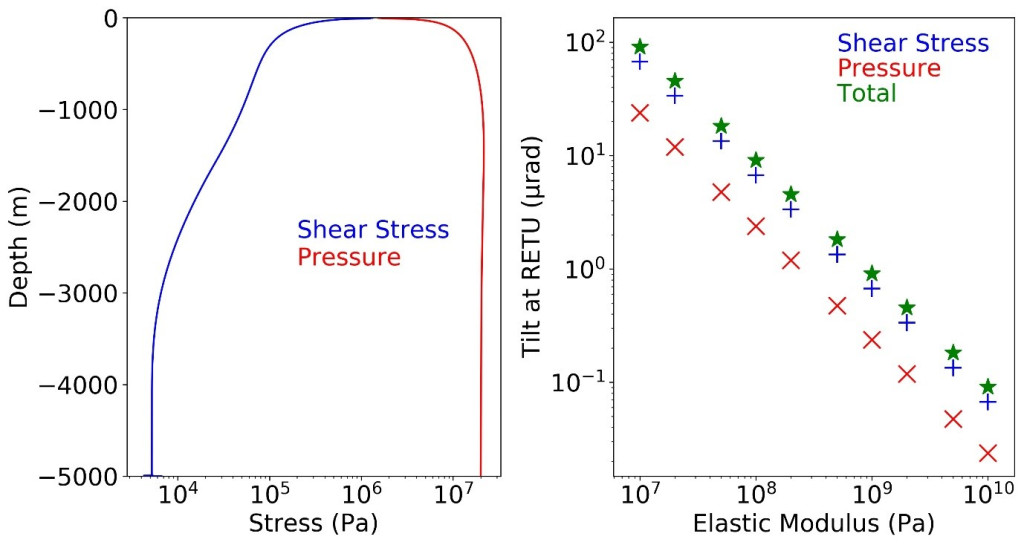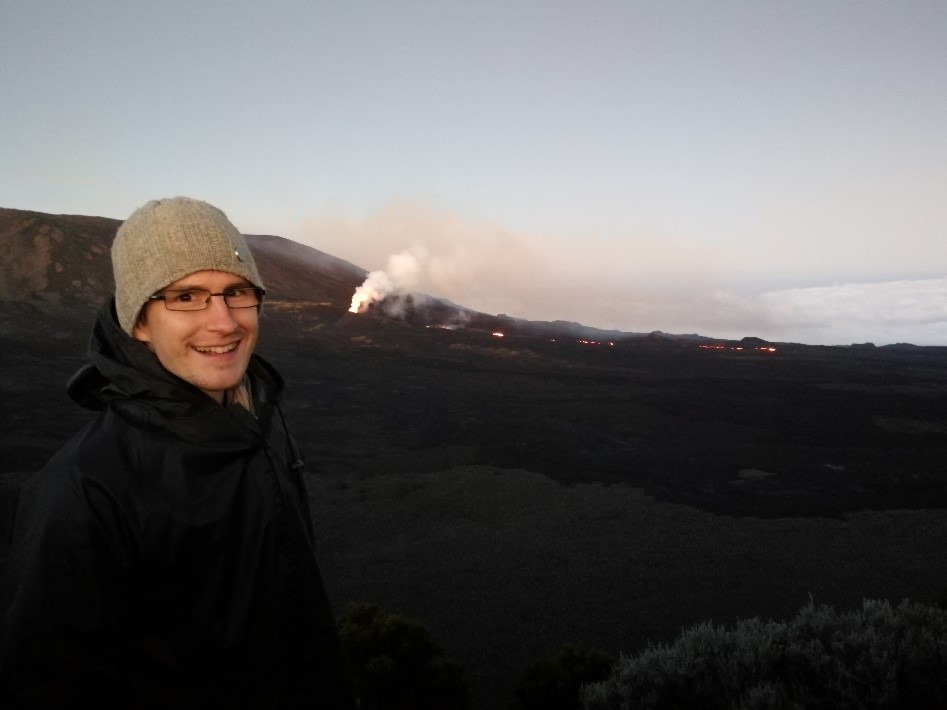
Luke Marsden
University of Leeds, United Kingdom
Between July 2013 and April 2014, four powerful Vulcanian explosions at Tungurahua volcano, Ecuador, were associated with an increase in seismicity and cyclic changes in tilt (slope angle), recorded at the RETU station, just 2 km from the summit (Figure 1).
Near-field deformation at silicic volcanoes is frequently linked to a pressure source in the upper edifice. Alternatively, magma ascending through a conduit exerts shear stress on the conduit walls, which pulls up the surrounding edifice. Shear stress is proportional to the ascent rate, and therefore provides an important link between deformation and ascent dynamics. However, how much shear stress and overpressure is produced as magma ascends, and the relative contribution of each to near-field deformation at silicic volcanoes, has previously only been explored conceptually.

In this recent study, we used numerical flow modelling in COMSOL Multiphysics to quantify how much shear stress and pressure are produced as magma ascends. Depth-dependent profiles obtained through flow modelling were used to drive deformation models, thereby quantitatively linking magma ascent to deformation for the first time. Previous studies suggest that a pressure source can explain observed changes in tilt if the conduit is surrounded by a weak zone. It remains unclear how weak a volcanic edifice may be.
Typically in deformation modelling, values on the order of 1010 Pa are used for the elastic modulus – the applied stress over the strain exerted. This value is based on lab experiments using intact rocks. However, the elastic modulus of a large, heavily fractured and hydrothermally altered rock mass can be several orders of magnitude smaller than this, on the order of 107 Pa in some cases. We show that regardless of the strength of the edifice, shear stress dominates the tilt at RETU, despite being several orders of magnitude smaller than the overpressure at most depths (Figure 2). Therefore, both pressure and shear stress must be considered as sources of near-field deformation at silicic volcanoes.
All details can be found in the article of Luke Marsden et al. Linking Magma Flow and Deformation Modeling to Explain Observed Changes in Tilt, which recently came out in Frontiers in Earth Science.



Luke Marsden is a PhD student at the University of Leeds, supervised by Jurgen “Locko” Neuberg, and Mark Thomas, funded by NERC. This work was conducted in collaboration with the IGEPN, in particular Patricia Mothes and Mario Ruiz.
Luke Marsden is a numerical modeller and volcano seismologist, interested in what key parameters govern magma ascent, and the relationship between seismicity and deformation and silicic volcanoes.
You can follow him on twitter @LMarsdenVolcano.

Leave a Reply